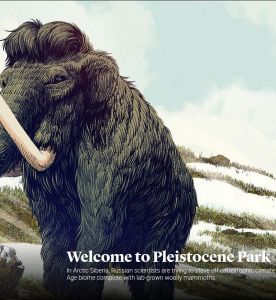Join getAbstract to access the summary!

Join getAbstract to access the summary!
Ross Andersen
Welcome to Pleistocene Park
In Arctic Siberia, Russian scientists are trying to stave off catastrophic climate change – by resurrecting an Ice Age biome complete with lab-grown woolly mammoths.
The Atlantic, 2017
What's inside?
Could resurrecting woolly mammoths prevent mass expulsion of greenhouse gasses from the permafrost?
Recommendation
For this scientific essay, Ross Anderson, senior editor at The Atlantic, treks through Siberia with Nikita Zimov, the director of Pleistocene Park. The goal of Zimov's project is to stall climate change by restoring the Mammoth Steppe grasslands ecosystem. One item is still on the to-do list: Resurrect the woolly mammoth. Anderson writes a compelling and objective evaluation of this fantastically ambitious project and the determined actors behind it. getAbstract predicts you will be astonished, concerned and awed – all at the same time.
Summary
About the Author
Ross Andersen is a senior editor at The Atlantic, where supervises the Science, Technology and Health sections.



















Comment on this summary